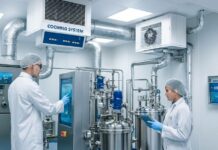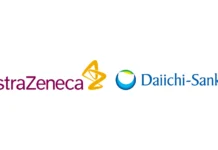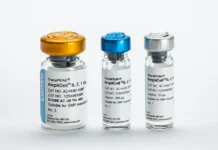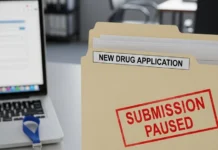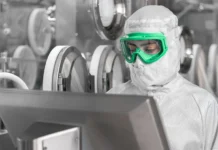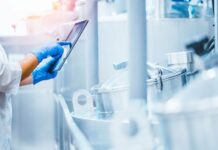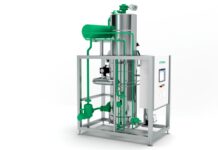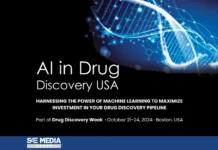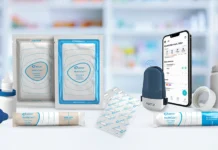It is noteworthy that the pharmaceutical industry is gradually moving toward what are referred to as biologics, or biological medications. The truth is that the prior generation of pharmaceuticals made by chemical synthesis was essentially one size fits all. Several individuals find that drugs like paracetamol, which come in stable tablet form and are difficult to overdose on mistakenly, are effective when taken in recommended dosages. All things considered, they are inexpensive to make, ship, and sell in addition to being safe for self-administration and somewhat effective.
However, biological medications really vary greatly from one another in terms of both formulation and characteristics. They are significantly more effective and have very few adverse effects since they are far more complicated, focused, and specialized. However, in order to maintain their stability, the majority of biological medications must be kept in refrigerators, and that too within certain temperature ranges. Additionally, they must be given in certain dosages that are tailored to each patient and are often injected intravenously. This makes it more difficult to provide these drugs since they are handled, stored, and given in hospitals, clinics, and even general practitioners’ offices. Biological medications are difficult to carry and even store, especially in nations without consistent electricity or refrigeration, which makes their widespread use very difficult.
The pharmaceutical sector is, in fact, being held back by these significant hurdles. Biological medications have the advantage of being far more efficacious, having less adverse effects, and being able to treat or even cure a broad variety of serious and often fatal disorders.
Fortunately, two particularly exciting developments that are now under investigation have the potential to completely transform biological drug delivery: inhalation and liquid-based distribution.
Delivery of Inhalation
Asthma inhalers have been available for a while now. However, creating medications specifically for inhalers demands a lot of heat, energy, and solvents. Most synthetic pharmaceuticals don’t have this issue, while biological drugs have a far higher sensitivity to heat and solvents. This is why creating biologic medications is not a good fit for the conventional inhalation production techniques.
Furthermore, most inhalation medications are low-dose substances, which makes it simpler to accurately measure and properly provide the recommended dosage to the lungs. As stronger or higher doses of medications are involved, it might be difficult to ensure that the appropriate amount is administered and, more importantly, that the lungs absorb the medication. A molecule that is too light will only be expelled, whereas a molecule that is too heavy may not absorb at all.
In order to include potent and high-dose biologics into inhalation formulations at room temperature, Aston Particle Technologies is working on creating an innovative technique that makes use of isothermal dry particle coating technology. When it comes to the delivery of biologics via inhalers, this method is the ideal choice since it does not need any additional heat or solvents whatsoever.
In addition, the method is less difficult than other methods to the production of high-dose pharmaceuticals since it does not need a sophisticated procedure that involves many steps. This helps to speed up the process of developing new drugs and guarantees that goods meet market deadlines while also reducing costs. Not only is it more environmentally friendly, but it also requires less energy and chemicals overall, making it more environmentally friendly.
Delivery Methods Based on Liquid
One of the most common ways that synthetic medications are delivered is via the buccal system of the stomach. There are a variety of reliable techniques that the pharmaceutical industry has developed over the course of time for delivering pharmaceuticals to the stomach without putting them at danger of being damaged by the acid produced by the stomach. The most significant drawback associated with biological drugs is that they are larger molecules, which makes it more challenging for the stomach to absorb them.
It should be mentioned that Max Bio+ is working on a method that will use a special blend of lipids and polymers to build a liquid-based delivery system for biological therapeutics. Subsequently, this composite system forms specific nanostructures that both retain and distribute biologics in an aqueous solution such as water. As a consequence, nanoparticulates are produced that have the ability to enter the circulation via the buccal pathway, which is the gut. These particles may penetrate through many cell layers.
Furthermore, it has been shown that this specific combination of lipids and polymers works in conjunction with biological treatments to provide a synergistic effect, which results in an increase in the effectiveness of the biological medications.
The provision of a stable oral liquid formulation of essential pharmaceuticals such as insulin is one of the potential uses of this method, which may have a very wide variety of applications. Therefore, diabetics, rather than needing to inject insulin many times a day, may just consume an insulin injection when it is absolutely necessary to do so.
One of the other applications for them might be the ability to dissolve drugs in water, such as cannabidiol (CBD), which is often provided in the form of an oil and has a propensity to bind to lipids. In order to combine these compounds into other aqueous solutions, rather than utilizing the emulsifiers, which are sometimes unpleasant, it is possible to add them in bigger quantities while still preserving their full flavor. It is possible that this may result in the production of more powerful CBD-based meals and drinks, including those that include alcohol.
The Prospects
It is interesting to notice that six of the ten most recent treatments that have been authorized by the FDA are biologics; this demonstrates how quickly the world is seeing change. As far as biological medicines are concerned, the fact of the matter is that we are all going to ride a wave of transformation, and it is exciting to think about the ways in which biologics will continue to affect people’s lives over the course of the next 10 years and beyond.



